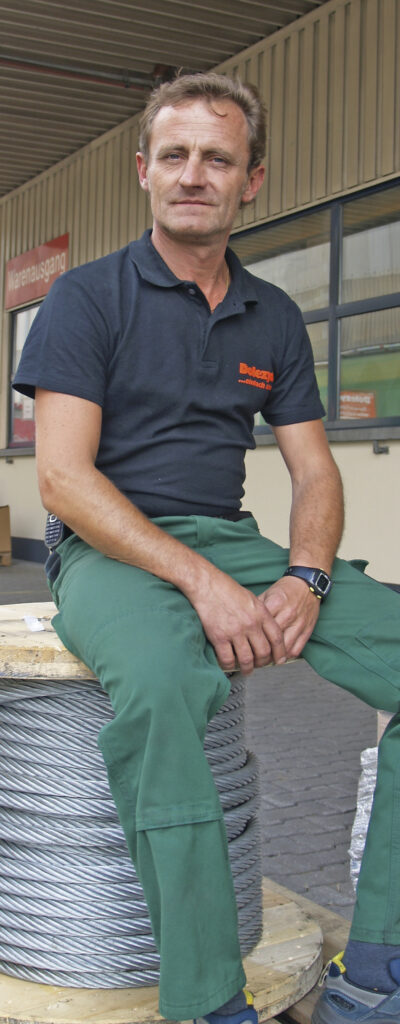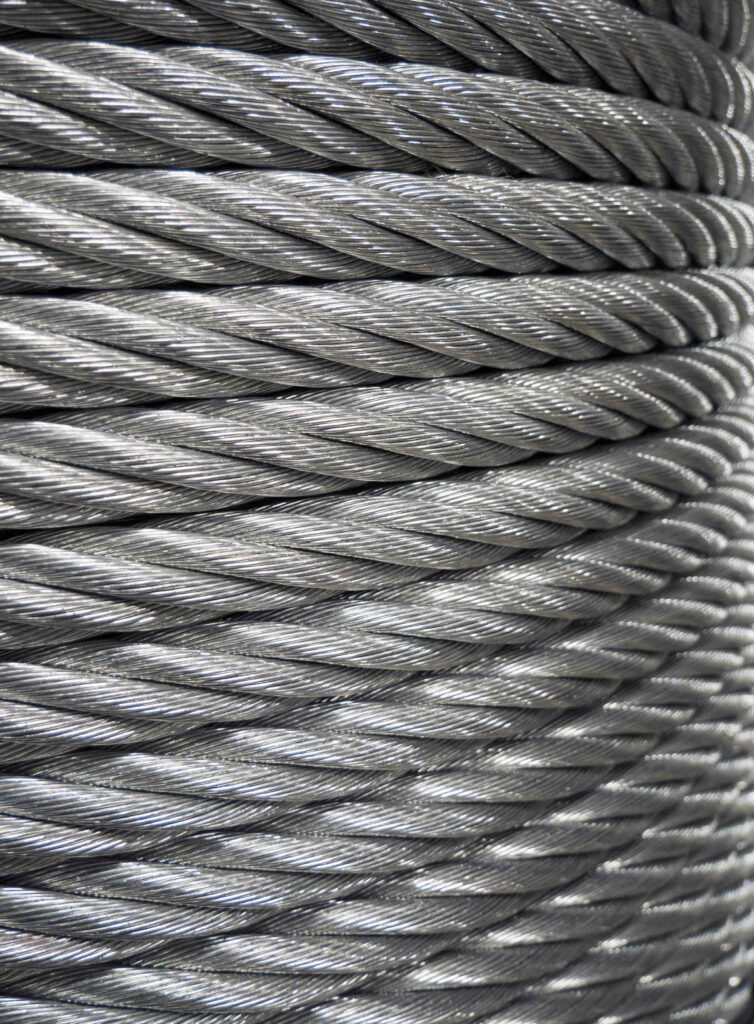The peculiarity of a Flemish Eye
Our content-editor visits the ropery
Whenever I come to the ropery, I feel as if I have entered a very special world. A distinctive smell hangs in the air, it is a mixture of steel and grease. The roar of the machines and the sound of a hammer can be heard. The main role here is played by steel cables – meters long, thin, and thick, shiny or matt.
They lie coiled on large wooden reels on the shelf, waiting to be processed. In contrast to the fine ropes workshop next door, in which delicate work is required on ropes from 0.8 to 6 mm in diameter, steel ropes from 6 mm in diameter are processed in the rope shop. In addition to a lot of know-how, real strength is also required.
Making ropes is craftsmanship in the literal sense of the word. 12 colleagues are currently employed here, and young talent is hard to find. Most of the colleagues in the rope factory have been with the company for a long time, some of them for almost 50 years!

Waldemar Ptok is the master of the ropes. He has been working in the Dolezych rope factory for 31 years, starting as an apprentice. In no time at all he shows me how to make a Flemish eye, a particularly safe and long-lasting wire rope connection for sling ropes. It is a relatively thin rope of 20 mm with which he demonstrates this to me – upwards of 24 mm rope diameter teams of two must work on the rope. This rope termination is possible for ropes between 8 mm and 32 mm.
The Flemish Eye
Flemish eyes are particularly safe. This is due the special way in which they are made, but also attributable to the fact that in Germany, steel ropes with a steel core (instead of a fiber core) and a steel ferrule are usually used for Flemish eyes. The steel core makes Flemish eyes particularly suitable for use in hot areas up to 400° Celsius. A fiber core would burn at these temperatures – undetectable to the user. Consequentially, the rope would become hollow inside. The fiber composite would collapse and would therefore no longer be able to support the load. The specified load capacity of the rope could then be negatively affected. However, this danger may not be noticed during a visual examination!
Due to the eyelet formation by splicing and crimping, the Flemish Eye offers 100% safety for the minimum breaking load for all 6-stranded constructions. The special design of the of the Flemish Eye guarantees a symmetrical distribution of the force. A steel pressure clamp ensures that Flemish eyes are more wear-resistant than ropes with aluminum pressure clamps.
The slim, conical shape of the steel ferrule, which tapers towards the bottom, prevents the rope from snagging when pulled under loads or when bundling. The Flemish eye is 100 percent manual work! Splicing the rope, reconnecting the strands in opposite directions as an eye and then to evenly wrap the strand ends around the load-bearing rope so that the steel clamp can be slid over it – yes, this is where pure rope craftsmanship is required!

Practice makes perfect
Waldemar Ptok estimates that it takes two to three months before the individual steps are really internalized. “You have to repeat the process over and over again, it takes practice.” With 31 years of experience, it looks foolproof, but I, for whom these steps are still new, get lost in the individual strands. “Simply bending” doesn’t work, steel needs muscle power and a Flemish eye requires a particularly structured approach.
No wonder a lot of training is needed for this. But this work and the responsibility that goes with it satisfies Waldemar Ptok. The ropes with the Flemish eyes are tested in our test laboratory, as are all our products so that safety is guaranteed.
A personal summary
The visit to the rope factory has (once again) impressively shown me the responsibility that the colleagues in production bear every day. As in our other production departments, it became clear to me that the human hand is irreplaceable for some processes and that this is what makes the products unique.
We have captured the operations in the ropery photographically.






